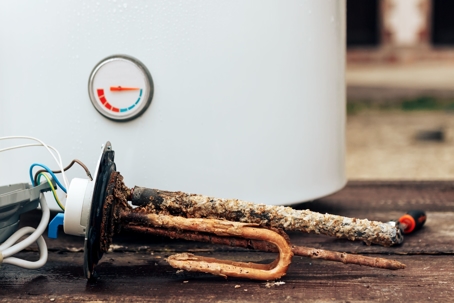Don’t Neglect Water Heater Maintenance
We rely on a steady supply of water for a variety of everyday household tasks, from showering to cooking dinner. Just like other appliances in your home, your water heater requires certain maintenance and upkeep in order to continue doing its job and bring you hot water on demand.
You may have heard of flushing a water heater, but what does it mean exactly, and why do plumbers recommend it? Read on to learn more.
Should I Flush My Water Heater?
Yes! It’s important to flush a water heater in order to keep it working properly. Over time, a water heater can collect calcium, sediment, dirt, and other miscellaneous minerals in the tank. If these deposits build up enough they can overwhelm the heating element, which can cause problems with your hot water supply. This is especially common in areas with poor water quality, making it essential to flush your water heater in order to keep up with your hot water demands.
What Happens if You Don’t Flush Your Water Heater?
- The tank can start to corrode due to the accumulated sediment
- Leaks can develop from the damaged tank
- Components can wear down faster or break entirely because of the sediment
- Clogs can form within the lines
- Water pressure can drop as the sediment can block the pipes to the system
- Energy efficiency can decrease as the system has to work harder to provide hot water
How Often Should You Flush Your Water Heater?
It’s typically recommended that you flush your water heater every 6 months or so. However, if your home is subject to hard water, you may need to flush your system more often. If you’re uncertain of when your water heater was last flushed or if sediment has built up in the tank, you can watch for any of the following signs.
Signs of Sediment Buildup in Water Heater:
- Discolored or rusty-looking water
- Rumbling or popping noises are coming from the water heater
- Temperature fluctuations
- Increased utility costs
- Longer heating times for your water
How to Flush a Water Heater
While your water heater should be regularly serviced by an experienced plumber, you are capable of (and encouraged to) flush the water heater yourself. Of course, if you’re not as handy and would like the help of a professional, never hesitate to call and ask!
Flushing a water heater simply means emptying it of its contents and refilling it with new, fresh water. You can accomplish this by taking the following steps.
To Flush Your Water Heater You Should:
- Turn off the gas or electric connection as well as the water supply. Allow sufficient time for the water to cool.
- Turn on the hot water from a nearby faucet. Keep this on during the entire process to help the tank drain more easily.
- Attach a hose to the drain valve and empty the water into a bucket or a nearby drain.
- Turn on the cold water supply and allow it to flush through the water heater, taking the sediment along with it.
- Repeat step 4 a few times for the best results.
If you’re experiencing water heater problems, allow us to put an end to it! Give the plumbing pros at A. Fagundes Plumbing & Heating Inc. a call at (978) 350-5522 to schedule your appointment.

